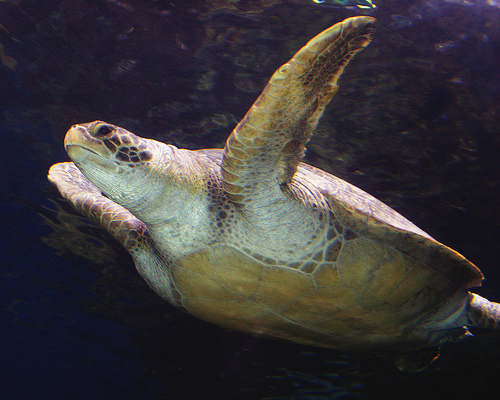
Ralphs
Discount tickets available at Ralphs for a limited time
After successful breeding programs and pilot studies, the project partners hope to help this animal rebound in Southern California waters
November 7, 2019
November 7, 2019, Long Beach, CA—An endangered species once abundant off the coast of California is getting an opportunity to rebound with the help of some expert human helpers. The National Oceanic and Atmospheric Administration (NOAA) in collaboration with the Aquarium of the Pacific, the UC Davis Bodega Marine Laboratory, the Bay Foundation, Paua Marine Research Group, the California Department of Fish and Wildlife (CDFW) and various other partners have been working together to help save the white abalone from extinction. This is the first time in history that this federally protected species is being released into the wild. The Aquarium of the Pacific is a founding partner of the White Abalone Recovery Program and has been working with NOAA for the past eleven years on this project. It is the only public aquarium involved in field activities and research on this species. “This is a historic moment, as a species once on the brink of extinction may finally have a chance to rebound. This is important not just for white abalone, but for the entire marine ecosystem off Southern California,” said Dr. Sandy Trautwein, Aquarium of the Pacific vice president of animal husbandry.
White abalones reared at the UC Davis Bodega Marine Laboratory as part of this collaboration will be released into the wild in mid-November at undisclosed locations in Southern California. The release locations will be kept confidential among the project partners, allowing the white abalones to settle in the ocean. Scientific divers from the Aquarium of the Pacific along with divers from NOAA, CDFW, the Bay Foundation, and Paua Marine Research Group will release the white abalones from their holding boxes, which were placed in their underwater locations at the end of October. “Natural recovery is not occurring fast enough or at all for this species to rebound on its own. Fishing and other human activities brought white abalone to the brink of extinction, and now it is our responsibility to recover the first federally protected marine invertebrate,” said Melissa Neuman from NOAA National Marine Fisheries Services’ Abalone Recovery Program.
The Aquarium of the Pacific was one of a small number of facilities that received brood stock (or white abalone adults who would become “parents”) to jump-start the breeding program under human care. When the Aquarium joined the White Abalone Recovery Program in 2008, only seventy-five white abalones existed under managed care. Today, the list of project partners continues to grow as does the number of white abalone under human care for this project. Now thousands of white abalones produced through collaborative spawning efforts and cultured under the project partners’ care since 2012 are being groomed for future releases.
The Aquarium of the Pacific has had success in spawning white abalones in its abalone culture lab and has also been involved in various other research aspects of the program. This has included housing and caring for brood stock that helped increase genetic diversity of cultured abalone, studying food and lighting optimal for abalone care, conducting underwater monitoring surveys to help determine suitable release sites for the white abalone, research in the Aquarium’s exhibits on abalone outplanting (releasing) enclosures used in the ocean before the animals are released, and working with NOAA on a pilot study project that included raising, outplanting, and monitoring red abalone in the wild. The Aquarium of the Pacific’s scientific divers have been utilized for their expertise to assist in field research for this project that has included underwater work in the test and release sites. The Aquarium is an institutional member of the American Academy of Underwater Sciences (AAUS), the body that has established standards for scientific diving. Since 1999, the Aquarium has regular provided AAUS-approved training in underwater data gathering techniques to qualified staff divers.
White abalones were listed as endangered under the Endangered Species Act in 2001. Abalones are shellfish in the phylum Mollusca, which also includes clams, scallops, sea slugs, octopuses, and squid. Abalones have a single, flat-shaped shell and are part of the genus Haliotis, meaning “sea ear,” which refers to the shape of their shell.

Discount tickets available at Ralphs for a limited time